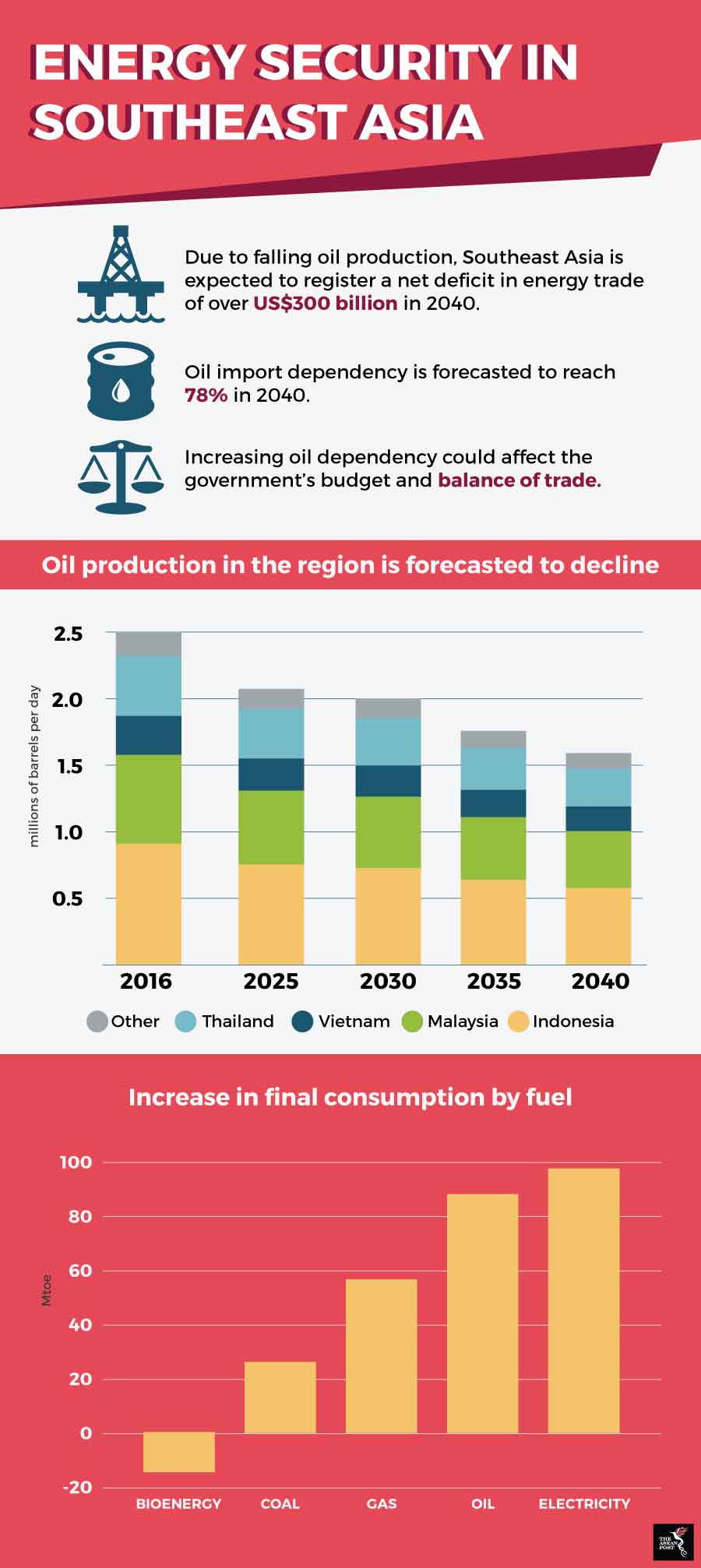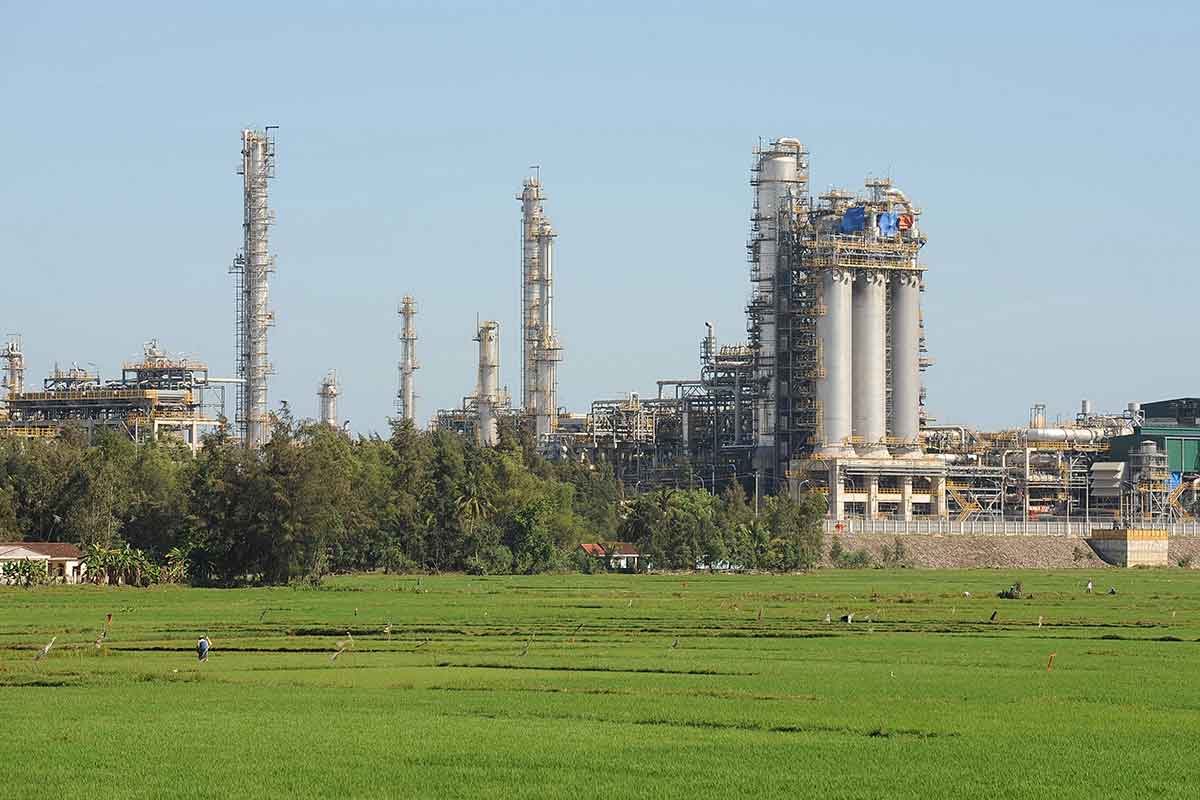As Southeast Asia becomes one of the fastest developing regions in the world, concerns over its energy security is fast growing. Southeast Asia has a combined population of over 600 million people and an economy worth nearly US$3 trillion. Furthermore, the World Economic Forum (WEF) forecasts that the region will become the fifth largest economy in the world by 2020.
With the region developing rapidly, demand for energy is now higher than ever. Southeast Asia’s energy demands have grown 60 percent over the past 15 years and is forecasted to grow by another two-thirds by 2040. One factor contributing to such a massive rise in energy demand is the fast-growing economy. As the economy expands, more energy is needed to power the economy. Aside from economic growth, the population of Southeast Asia is also forecasted to expand by 20 percent with the urban population alone growing by over 150 million people. These factors combined are the driving force behind the region’s growing energy demand.
To supplement this growing energy demand, the International Energy Agency (IEA) mentioned in its Southeast Asia Energy Outlook 2017, that demand for oil and coal is expected to swell in the coming years.
The growing dependency on oil and coal to power the surge in energy demand in the region has become a cause for concern. The IEA mentioned that energy security could become an issue for Southeast Asia in the future if it begins to reorient itself as an energy importer rather than an energy producer.

There is no real consensus on the meaning of the term “energy security” but the IEA, an intergovernmental organisation which works to ensure reliable, affordable and clean energy for its members, defines energy security as “…the uninterrupted availability of energy sources at an affordable price”.
The concern for the region isn’t exactly about the affordability for its consumers but for their governments. With the increasing demand for energy, oil demand is expected to grow from 4.7 million barrels per day to about 6.6 million barrels. Southeast Asia used to be known for its rich oil fields, however this resource is now depleting fast. Aside from Brunei and Thailand, the region’s biggest oil producers – Malaysia, Indonesia and Vietnam – are having a tough time keeping up with the growing pace of oil demand in the region. These countries today have become net importers of oil rather than exporters. It is predicted that crude oil imports will more than double in the region by 2040.
Meeting energy demand by way of imports could place a strain on government expenditure and trade balances. With oil imports increasing, Southeast Asia is expected to register a net deficit in energy trade of over US$300 billion in 2040. The burden would have an even worse effect for countries that employ oil subsidies such as Indonesia, Thailand and Malaysia. The consumers there might not realise it, but their governments will feel the burden of importing oil along with the added cost needed to subsidise it for their respective citizens. Continuing to do so over the course of the next decade will not be sustainable.
Therefore, these governments need to reform some of their policies to ensure energy security in their respective countries. One of the ways to ensure energy security, is to rely on more affordable and sustainable sources of energy. Oil prices are known to be unpredictable and prone to market forces. Renewable energy on the other hand could provide clean energy at stable prices.
The IEA states that interconnection of energy systems in the region would bolster energy security. ASEAN is still a long way from realising its goal of an ASEAN Power Grid, and it needs to work on developing it swiftly. The ASEAN Power Grid was first conceived in 1997 but not much progress has been made since then. Cross-border energy interconnections benefit everyone and would be less costly to develop if all ASEAN countries were involved.
While energy demand will continue to rise, ASEAN nations need not have to rely on traditional energy sources such as oil to fuel it; especially when doing so may raise energy security concerns. Governments in the region need to employ alternative energy sources and work together to maintain energy security not only for their own nations, but for the rest of ASEAN as well.
This article was first published by The ASEAN Post on 30 April 2018 and has been updated to reflect the latest data.
Related articles:
The need for renewable energy cooperation
ASEAN’s challenges in developing the renewable energy sector
